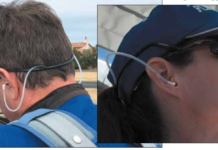Crankcase Acid
I think you neglected an important tip in the lightbulb trick sidebar. The lightbulb should be a 240-volt bulb instead of a 120-volt bulb. A 240-volt bulb operated at 120 volts will produce more heat (and less light) than a 120-volt bulb. And this is what you want. The bulb will also last about forever and will be much more shock resistant than the best 120-volt bulbs made for drop lights.
When I lived in the Peruvian jungle, where the humidity was in the 90 percent range, we would use these bulbs in our closets or “hot boxes” to keep clothes, cameras and so on from mildewing.
Wade ten Bensel
JAARS Aviation
Via e-mail
Well concede we don’t know what crankcase acidity levels are and whether a dehydrator affects it in any way. Either way, drier is better, regardless of the pH.
Tanks and Antennas
The original flush fuel caps were a problem since they leaked water every time it rained. But after I changed these to umbrella-style caps, there has never been any water in my tanks. The original flush fuel caps were dangerous, in my view, accounting for many accidents. The changeover should absolutely be an AD.
You also mentioned that the Garmin GPSmap 496 has a combined XM/GPS antenna. While this works we’ll with GPS and its 24 satellites, XM has only one or two satellites, which are geostationary and thus receivable only when the XM antenna can “see” the southern sky. This leads to dropouts in XM coverage on northerly headings in most aircraft with the antenna on top of the instrument panel. Alternate locations inside the aircraft will have XM loss on other headings.
I have had the Anywhere Map XM weather product for a couple of years in my R182 and I finally had to stick the XM antenna on top of the wing root in order to get 100 percent XM coverage. The XM antenna with the Anywhere product is small and comes with a long thin cable, making this easy.
Timothy Quill
Hanover, New Hampshire
Actually, we erred. The GPS and XM antennas are not combined. What we meant to say is that the XM receiver and antenna are combined. There are two XM Radio satellites, both geostationary. Dropouts also have to do with antenna design and quality. We have experienced few with the Garmin antenna in the air, but numerous dropouts when using the receiver for ground navigation.
Cirrus vs. Diamond
There is only so much oil and Jet-A is the way to stretch it furthest. The next is improved range that the DA-42 has already proven. If diesel engines prove as resilient as they are in cars and trucks, many reaching over 200,000 miles, the prospect of longer TBOs in aircraft can only be a good thing.
The last reason is the flashpoint of Jet-A compared to avgas when it comes to an accident. A dear friend was killed in a crash of a Cessna 421 when a gear-up landing turned fatal; a rock broke open a fuel tank and ignited the leaking avgas to roast everyone on board. With Jet-A and an airframe parachute as standard equipment (along with seat-belt airbags), this will drastically reduce the numbers of GA fatalities. It would be interesting to find statistics on diesel auto accidents compared to gasoline car mishaps due to post-crash fire fatalities.
Phil Graves
Via e-mail
Which Headset?

Thanks for the article on light headsets. I have an eight-year-old daughter who does not tolerate standard child aviation headsets. It would seem that one of the products mentioned in the article might be best for her, although price needs some consideration for a kid. Might the author have a recommendation for factoring in the use of such headsets by kids?
Michael Baum
Via e-mail
Lionel Lavenue replies: I think the Y-pod would be ideal for a child. Its inexpensive, performs we’ll and requires the user to specifically hold the mic next to the lips to be heard through the intercom.





